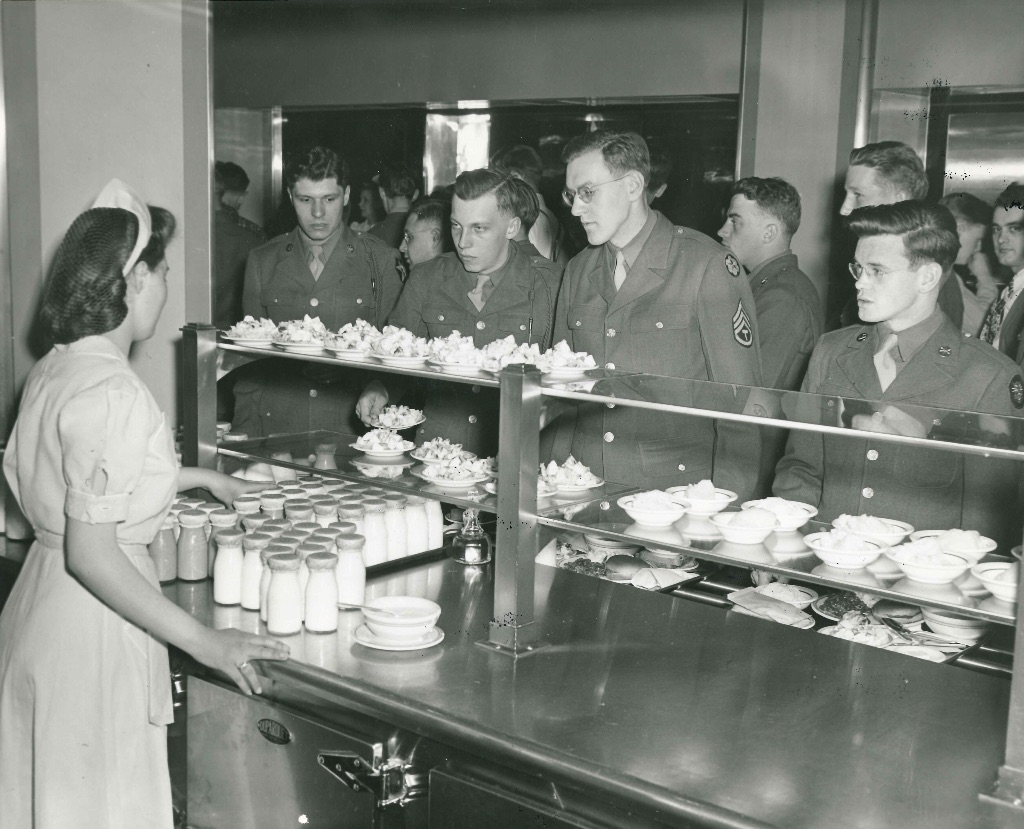In our last interview together, we got to know more about historian and editor, Ryan A. Ross. In it, he gave us a seriously in-depth look at the history of Homecoming at the University of Illinois. For this article, we’re doing a deep dive into the history of the buildings on campus. Ross covers everything from what makes Altgeld Hall so special, to how the U of I is really good at repurposing buildings.
This interview has been edited for length and clarity.
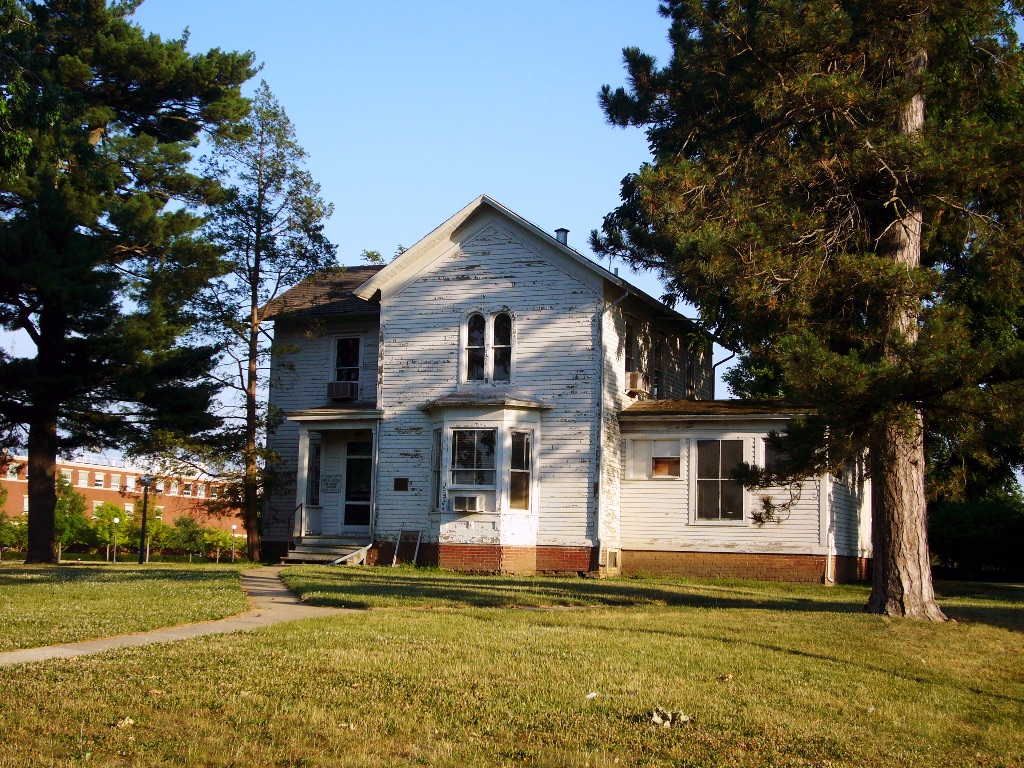
Smile Politely: Can you tell me about some of the oldest buildings on campus?
Ryan A. Ross: The oldest surviving building at the U of I is Mumford House, which sits on the South Quad, near the McFarland Carillon. Mumford House was built in 1870 as a model farm house, at a cost of $2,500 (a little under $59,000 today). At the time, it was way down on the south part of campus, with a barn, experimental farm fields, and almost nothing else. The house was the campus’ second building, and over the next 69 years it served as both a learning lab for ag students and a private residence, often for the dean of the College of Agriculture. Many of the administrators and faculty who lived there, including Thomas J. Burrill, George Morrow, and Eugene Davenport, later had campus buildings named in their honor. The house was ultimately renamed to recognize the agriculture dean Herbert Mumford, who lived there with his family for 33 years. In 1939, the house was transferred to the College of Fine + Applied Arts and, for decades, was used as a studio for artists in residence. Today, Mumford House belongs to the campus rather than a specific college and is not in use. (The campus’ first building, nicknamed the “Elephant,” stood until 1880, when it was demolished after being heavily damaged in a storm.)
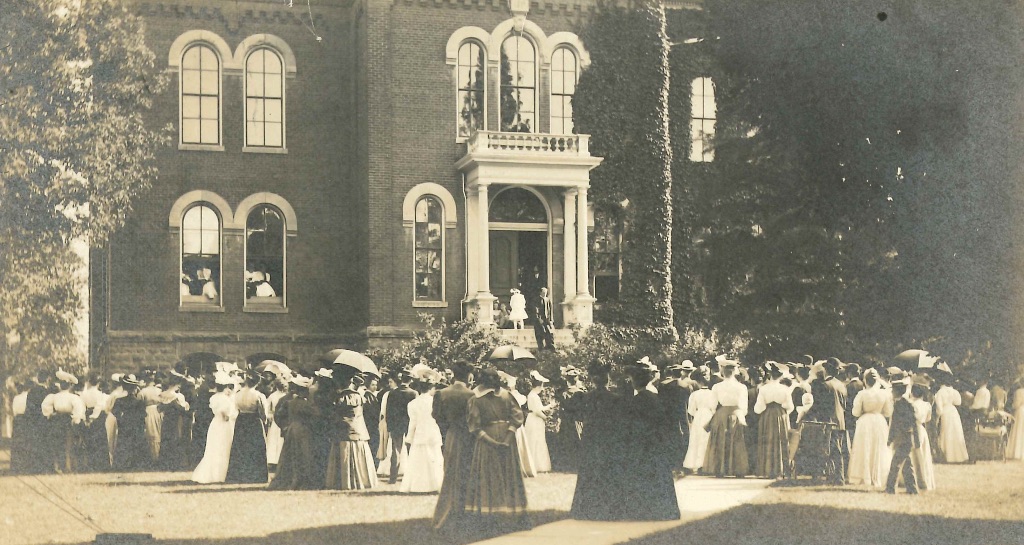
The U of I’s oldest surviving classroom building is Harker Hall, which opened in 1878 and was designed by Nathan Ricker — a member of the U of I’s first graduating class, the first person to earn an architecture degree in the United States, and a U of I faculty member for 45 years — and John M. Van Odsel. Harker Hall was originally the Chemical Laboratory and, at the time of its construction, was considered one of the most advanced chemistry labs in the nation. Students made good use of the facility by concocting a chemical compound called “eye-water” that would make you cry and cough and choke, and they would often use it to play pranks on each other, throwing the substance into enclosed spaces such as dance halls and passing carriages. By 1902, the Department of Chemistry had outgrown the building and constructed what would become known as Noyes Lab. The College of Law moved in and occupied the space for the next 25 years, until it moved to Altgeld Hall. In the decades that followed, the facility would be known as the Entomology Building, housing the Departments of Entomology and Botany and classrooms for a wide variety of disciplines. During that period, in 1941, the building would be renamed Harker Hall in honor of Judge Oliver Harker, who had served as the law school’s dean from 1903 to 1916. In the early ’90s, Harker Hall underwent a major renovation, and from 1993 to 2024 served as the headquarters of the University of Illinois Foundation. The building is currently being renovated and, as of Fall 2024, will be the new home of the U of I Chancellor’s office.
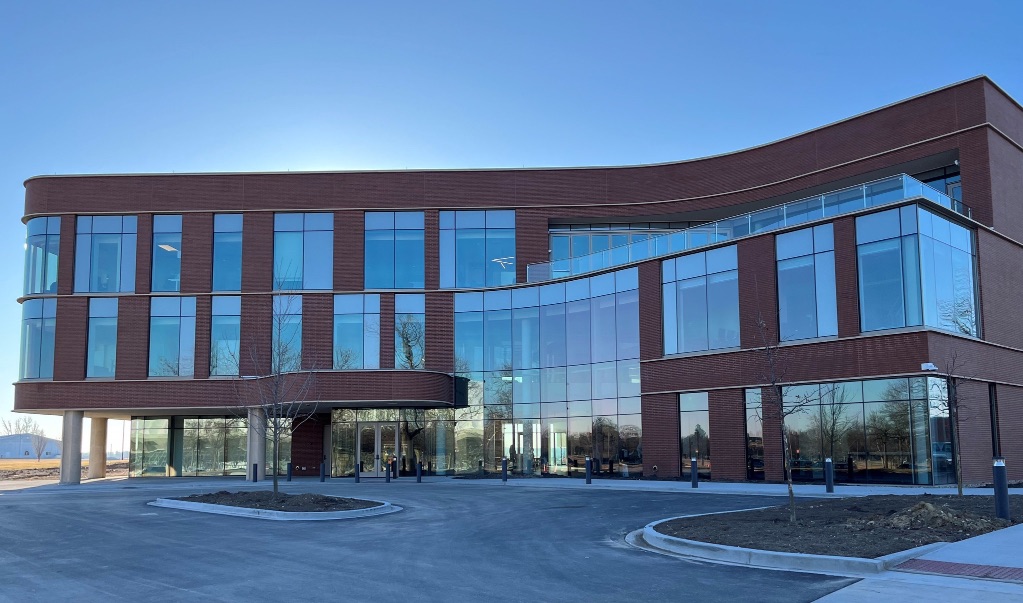
SP: How about the newest building on campus?
Ross: The newest facility is only two weeks old! The University of Illinois Foundation’s Philanthropy Center, located just east of the I Hotel, officially opened on Valentine’s Day. And, as usual, the U of I has several current construction projects. Some are major renovations, including the $192 million dollar Altgeld Hall project, as well as the redevelopment of the former Undergraduate Library into a facility for the U of I’s special collections and archives. Others are for brand-new facilities, including the Gies College of Business’ Steven S. Wymer Hall, which will open in 2025; and a new statistics and data science center, on the former site of Illini Hall, as part of the Altgeld Hall project.
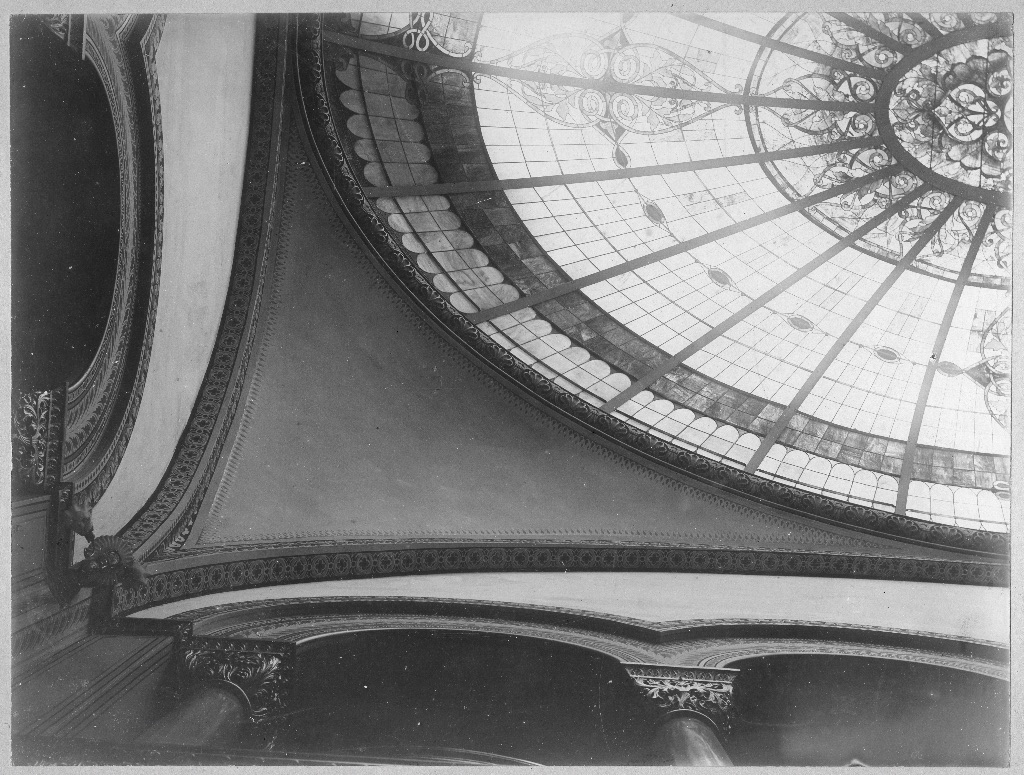
SP: Is there a feature or architectural structure of a building that stands out to you?
Ross: I love pretty much everything about Altgeld Hall, with its red-tile roof, arched windows, the tower and chimes, and the fine details of each piece of pink sandstone, fitted together into patterns. One of the building’s architects, Nathan Ricker, was very specific about its color, and he worked closely with stone dealers to find exactly what he wanted. On the interior, Ricker and his design partner, James McLaren White, paid special attention to detail and incorporated elaborate ornamentations, including decorative arches and beautiful lamps and light fixtures, such as the ones at the main staircase. Then, there’s the gorgeous mosaic in the foyer, and the colonnaded arcades and curved staircases and balconies with wrought iron railings, the glass floors and iron decorative motifs in the library’s stacks, the patterned wall designs, and the murals for each of the U of I colleges that existed in 1897, when the building opened — I mean, I could go on and on about this stuff, but I’ll spare readers.
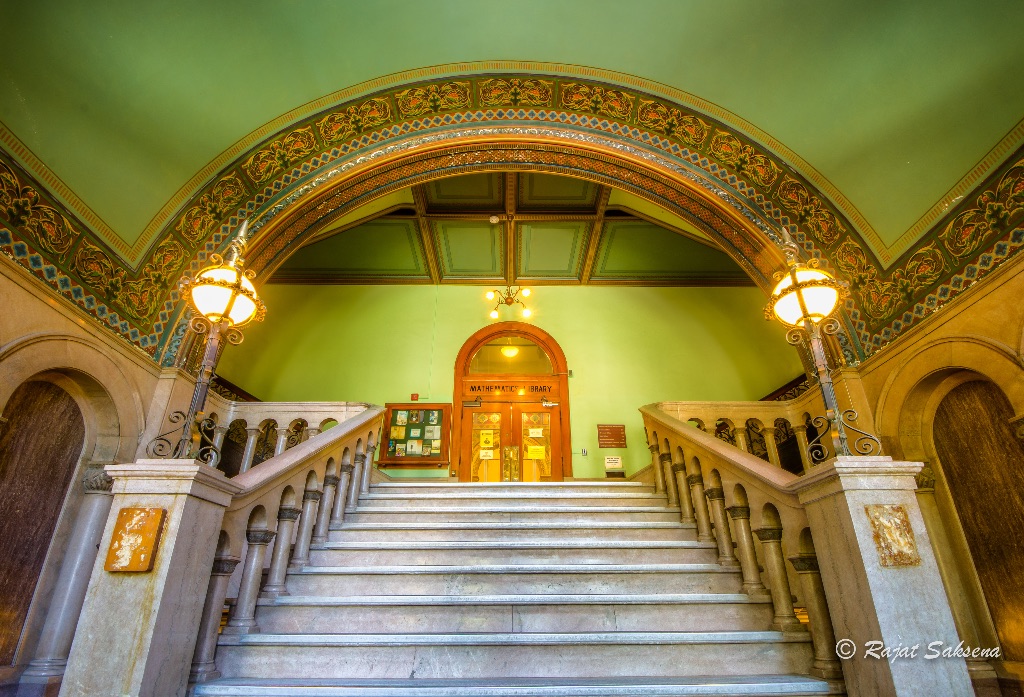
I think Ricker and White’s attention to detail is what makes Altgeld Hall so enduring and so deserving of the massive renovation project that will restore the building to its original grandeur, with its long-gone, stained-glass dome and other incredible features. Also, I just love the name of the building, which honors the Illinois governor John Peter Altgeld (1893-97), who was one of the leading figures of the Progressive movement in the 1890s. It’s one of five so-called “Altgeld castles” that were built at Illinois universities during his tenure — the others are at Illinois State, Eastern, Northern, and SIU-Carbondale — and it’s definitely the most unique and beautiful.
SP: A lot of campus buildings were built before the World Wars, the Civil Rights movement, and other major cultural moments. What are some of the more remarkable uses or histories of campus buildings?
Ross: There’s been a long history of U of I buildings being repurposed during times of societal upheaval. One we can all identify with is the repurposing of buildings during pandemics. During the Spanish flu outbreak in 1918-19, several campus buildings were turned into makeshift hospitals, echoing what happened a century later with COVID-19, when the State Farm Center, Alice Campbell Alumni Center, and other structures became testing sites. But that kind of repurposing has been even more widespread during times of war.
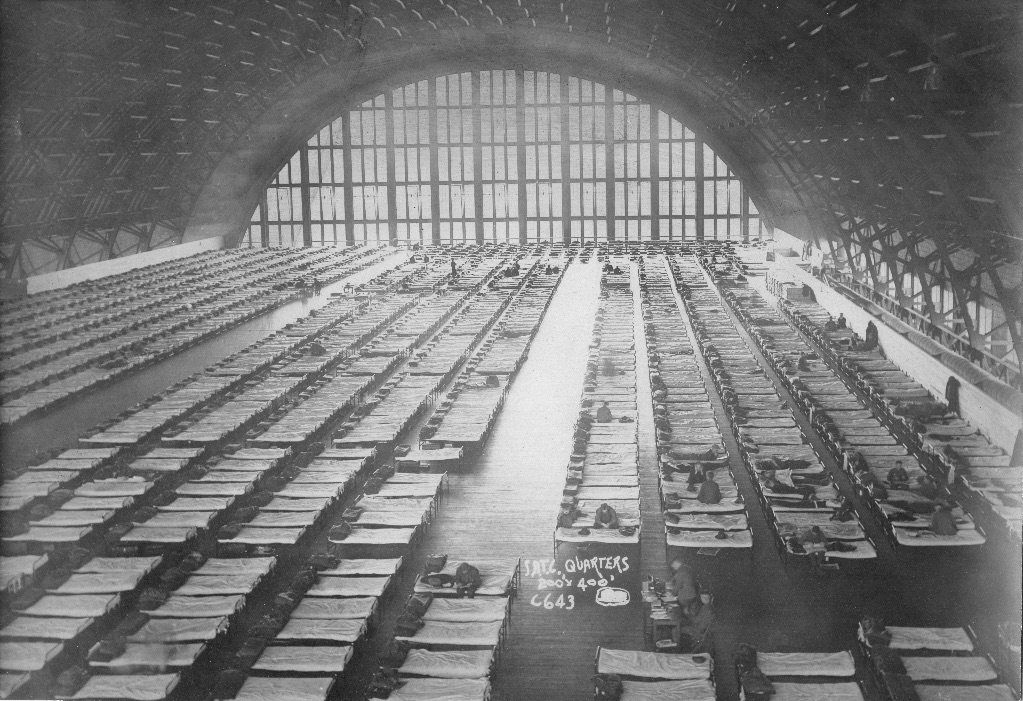
During World War I, the brand-new Women’s Residence Hall (now known as Busey Hall) was occupied as barracks for the campus’ military trainees before the U of I’s women students were ever able to move in. Fraternity houses were taken over for the same reason, as was the Armory. There are many great photos of the Armory from that period, showing row after row of cots, which housed more than 2,000 soldiers. And just a year after the war was over, in 1919, that same space was used as a parking garage when a record-number of alumni and football fans returned to campus for Homecoming. During World War II, it was a similar story. Forty-five of the University’s 52 fraternity houses became military quarters, along with the buildings we now call Kenney Gymnasium and the Kenney Gym Annex. And of course, if you’re going to house thousands of military trainees, you also have to find a way to feed them, so the Illini Union Ballroom and Ice Rink were transformed into mess halls. Meanwhile, campus buildings such as Noyes Lab took on top-secret defense research, and portions of those buildings were suddenly off-limits except to specific personnel, with black or red signs warning “No Admittance.” Even Memorial Stadium joined the fray: its West Hall became a workshop, classroom, and laboratory for the Navy’s Diesel Engine Operators’ School, while its East Hall was used in top-secret experiments related to fog dispersal.
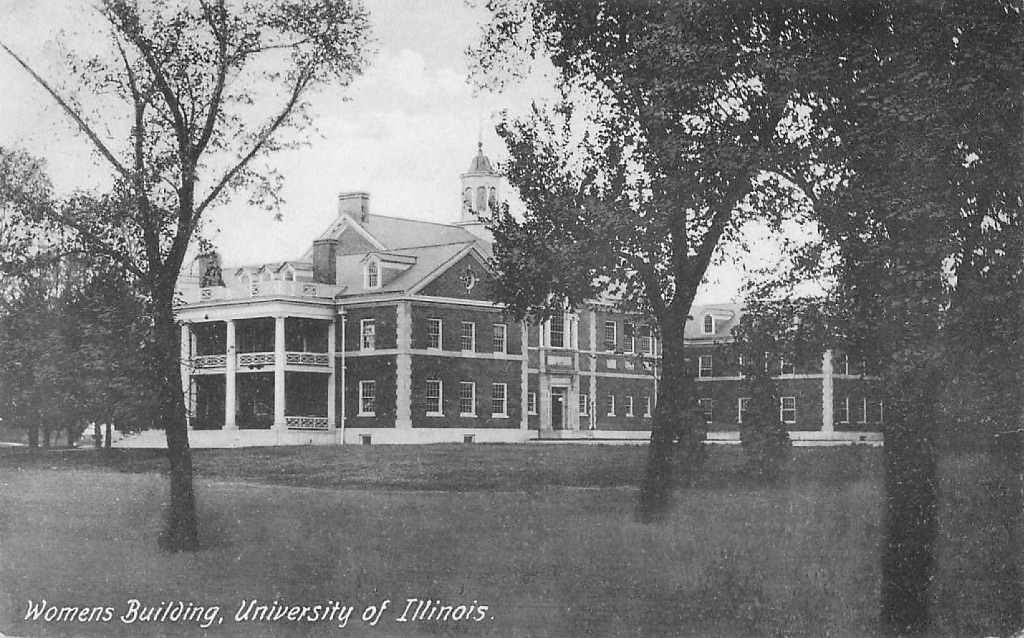
SP: Which building has a surprising history, and can you share that story?
Ross: One remarkable thing about the campus is that the U of I has had a tendency to preserve and repurpose its old buildings rather than demolish them. A few years ago I heard the writer Lex Tate mention that, in the University’s 150+ years, it has only torn down about 25 buildings. Think about how wild that is, on a campus of this size. Right now there are 651 official University buildings, and each of them has a unique history that’s been shaped by the colleges and departments that have used it, as well as societal impacts and a host of other variables. If you look at the history of virtually any older building on campus, you’ll find a laundry list of uses.
I was an English major in college, and I was always fascinated to learn about the ways in which the English Building had been used before I got there. It opened in 1905 as the Woman’s Building, a classroom building for the Department of Household Science, with a swimming pool on the lower level (where the Mary Kay Peer Lounge is today), a gymnasium on the second story, and parlors, a study room, and practice apartments on the top floor that were used in classes. When the building opened, it looked much different than it does today. For one thing, the beautiful colonnade on the east side wasn’t there — it was included as part of a 1913 addition. For more than 50 years Household Science was the building’s main tenant. But it wasn’t the only tenant. In 1941, WILL Radio moved its headquarters into the building, and the following year part of the structure was taken over by the Department of Physical Education for Women.
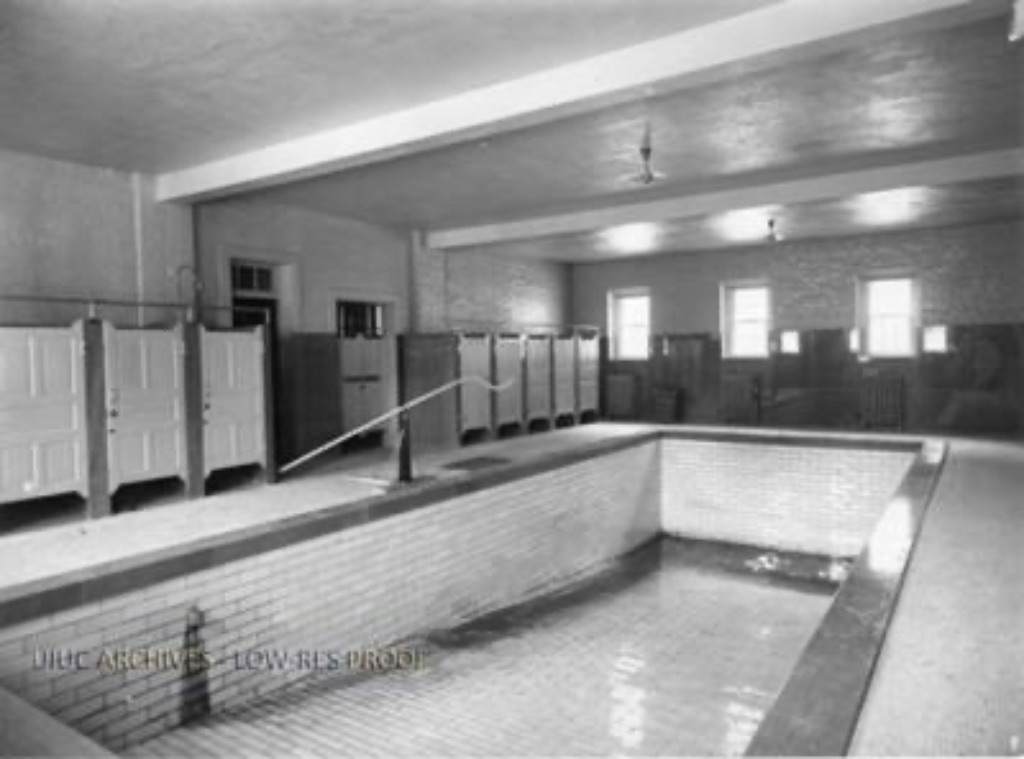
Like many, many U of I buildings during World War II, the Woman’s Building was requisitioned by specialized Army and Navy training programs that were located on campus. Trainees used the swimming pool as part of their exercises six days a week. Following the war, in 1946 the building was re-named Bevier Hall in honor of Isabel Bevier, the longtime head of the Department of Household Science. A decade later, home economics constructed a new facility on Goodwin Avenue, and that is the building everyone thinks of when you say “Bevier Hall.” As for the old Woman’s Building? In the mid-1950s, it was taken over by the English department, and it’s been called the English Building ever since. But the English department hasn’t been the only tenant. Starting in the mid-1960s, when the University adopted its chancellor system, the U of I chancellor’s office was located there, along with the University Senate’s offices. The Senate is still located in the English Building, along with a bevy of bookish professors and students and, apparently, ghosts, if you believe in such things! I’ve done a deep-dive on the English Building here simply to show that the use and re-use and re-re-use of campus buildings has a long and complicated and rich history. Pick any building here that’s more than a hundred years old, and you can construct a similar kind of story. And they’re all interesting, in their own ways.
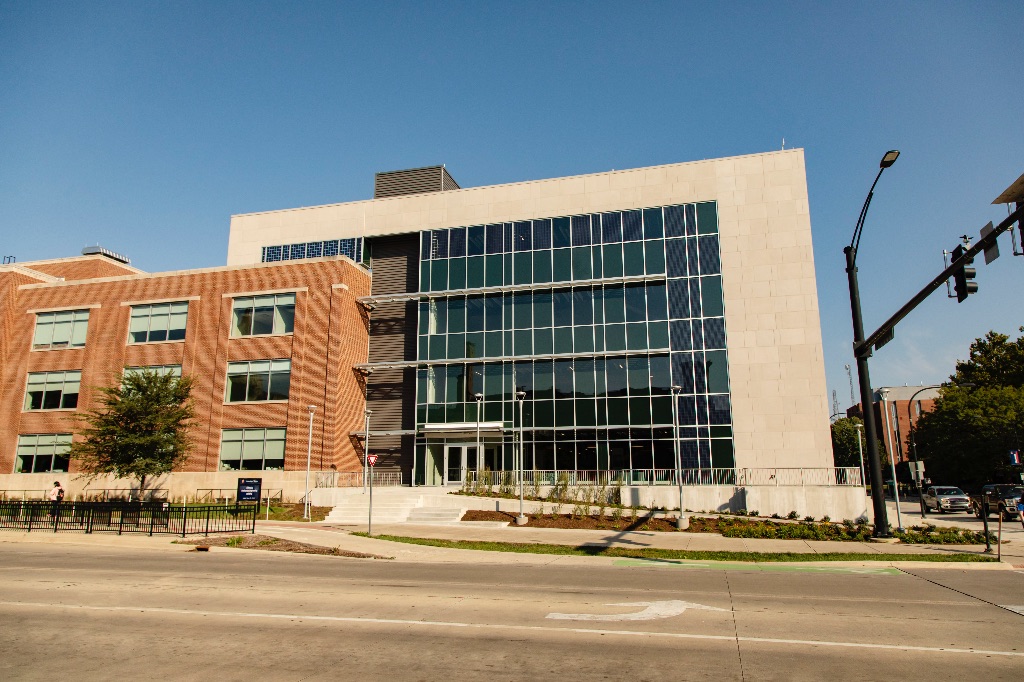
SP: Which buildings are named after historically excluded and marginalized people, specifically people of color and women?
Ross: The buildings named after people of color opened in recent years. They include:
- The Sidney Lu Mechanical Engineering Building (2021), which was re-named after the donor and 1981 alumnus as part of a major renovation to the 1950 structure.
- Bousfield Hall (2013), named for the University’s first female African American graduate (1906), the longtime Chicago educator Maudelle Tanner Brown Bousfield.
- Wassaja Hall (2016), named for the U of I’s first Native American graduate (1884), the medical doctor and advocate for native rights, Wassaja (formerly known as Carlos Montezuma).
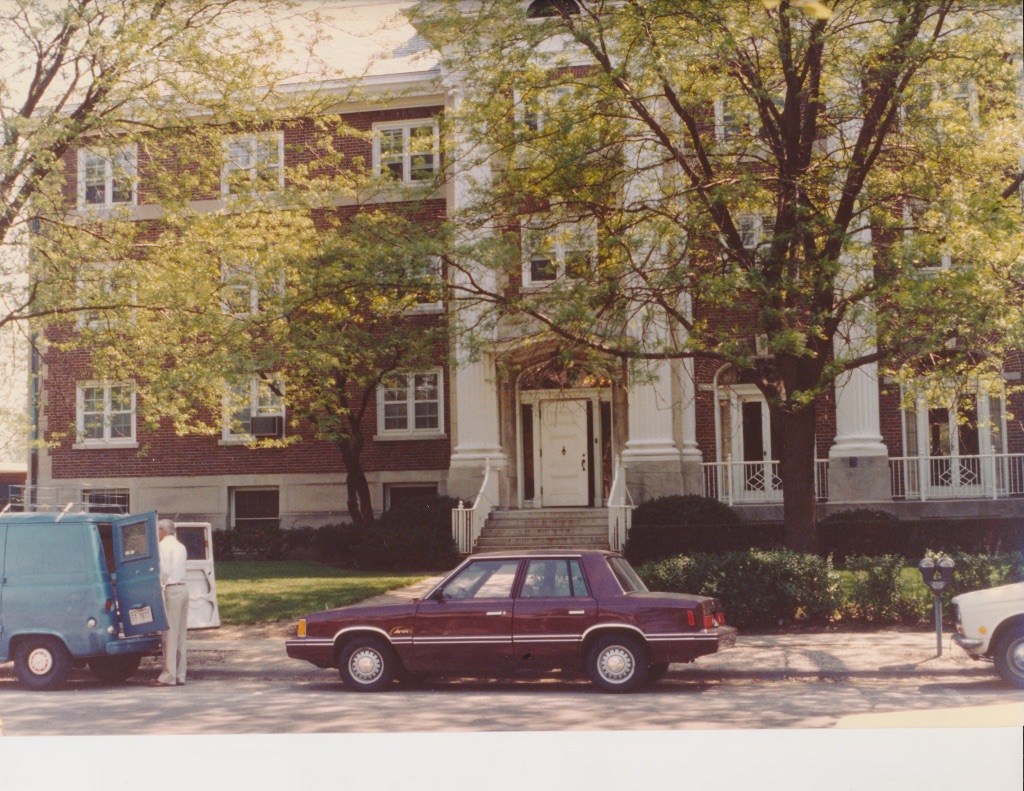
There are more than a dozen campus buildings that are named after women, including:
- Alice Campbell Alumni Center (for the lawyer, philanthropist, and former College of Law professor, who received her JD from Illinois in 1943)
- Allen Hall (residence hall named for Louisa Allen Gregory, an Illinois professor from 1874 to 1880, a pioneer in the field of domestic science, and the wife of John Milton Gregory, the University’s first regent, or president)
- Bevier Hall (College of Agricultural, Consumer, and Environmental Sciences classroom building named for Isabel Bevier, an Illinois professor from 1900 to 1921 and one of the pioneers of the field of home economics)
- Blaisdell Hall (Pennsylvania Avenue Residence Hall named for Daisy Luanna Blaisdell, a professor of German from 1900 to 1926)
- Bousfield Hall (see above)
- Busey Hall (residence hall re-named in 1937 for the former University Trustee Mary Busey; originally known as the Women’s Residence Hall)
- Doris Kelley Christopher Hall (College of Agricultural, Consumer, and Environmental Sciences building devoted to the Family Resiliency Center and The Autism Project, named for the 1967 Illinois alumna and donor Doris Kelley Christopher, who founded The Pampered Chef)
- Evans Hall (residence hall re-named in 1937 for the former University Trustee Laura B. Evans; originally known as the West Residence Hall)
- Foellinger Auditorium (1907 concert and lecture hall on the south end of the Main Quad, re-named as part of its 1983-85 renovation in honor of donor Helene Foellinger, a 1932 Illinois alumna and a newspaper and radio executive)
- Freer Hall (1931 Woman’s Gymnasium, re-named in 1968 for Louise Freer, head of the women’s physical education department from 1915 to 1949)
- Saunders Hall (Pennsylvania Avenue Residence Hall named for Alta Gwinn Saunders, an Illinois professor from 1917 to 1948 and one of the founders of the field of business communication)
- Tina Weedon Smith Memorial Hall (music building named for the late wife of University Trustee Capt. Thomas J. Smith; the first U of I building constructed with private funds)
- Trelease Hall (Florida Avenue Residence Hall named for Leah Trelease, a former U of I staff member and dean of women)
- Wardall Hall (Illinois Street Residence Hall named for Ruth Wardall, head of the home economics department from 1921 to 1936)
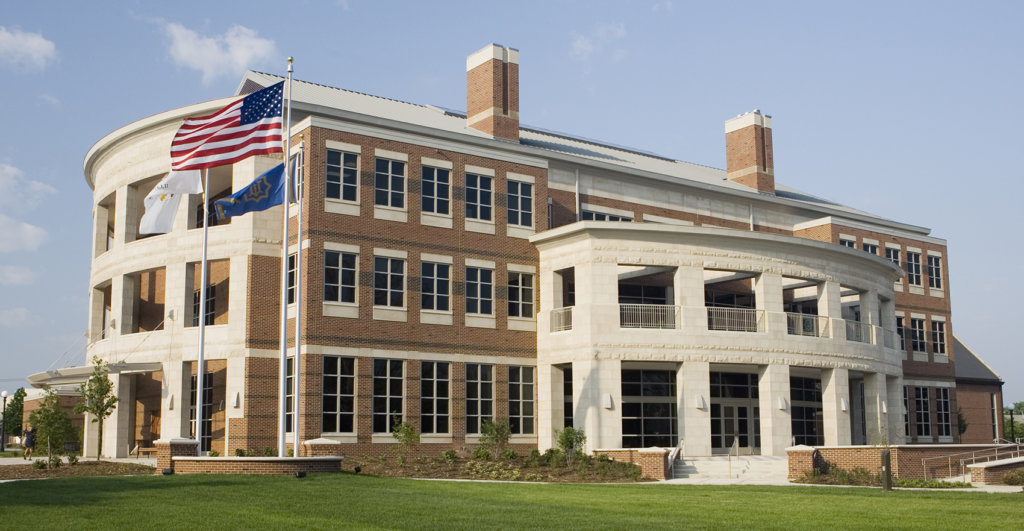
SP: Where can people go to learn more about the architecture on campus?
Ross: The definitive source on the U of I’s architecture is Lex Tate and John Franch’s book An Illini Place: Building the University of Illinois Campus. It’s a thorough history of the buildings, landscape, and other physical features that make up the U of I. There are also some really valuable online supplements to the book that are available through the U of I Press’s website. Another great resource on the U of I’s architecture is the University of Illinois Archives’ Mapping History at Illinois, which features an interactive timeline that shows the campus as it developed, year by year. Finally, the physical campus is represented in a number of exhibits in the Richmond Family Welcome Gallery at Alice Campbell Alumni Center.
Ryan A. Ross is Director of the University of Illinois Alumni Association’s History and Traditions Programs, Senior Editor of Illinois Alumni magazine, and Curator and Collections Manager of the Richmond Family Welcome Gallery at Alice Campbell Alumni Center.








